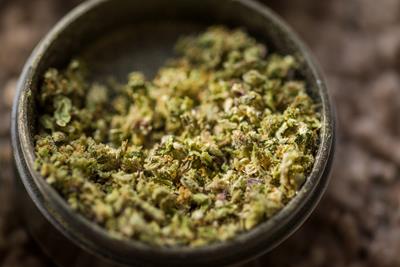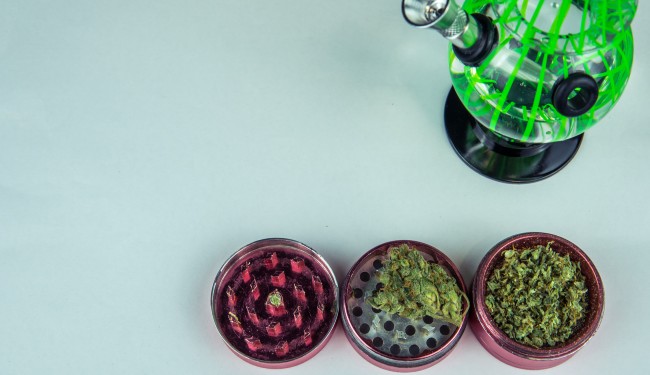
Tuesday March 30, 2021
By Erin Hiatt
 Education
Education
Seasoned and novice cannabis consumers alike should have a grinder as part of their essential consumption toolkit. Breaking up cannabis flower into smaller pieces will always be part of the smoking process, but doing it efficiently and with the proper tool can create for better seshs overall. Having a nice fine grind makes it easier to roll joints and allows for a better and more even burn in pipes, joints, and dry herb vaporizers.
Fine grind aside, a primary reason to use a grinder is that they help keep those ooey-gooey trichomes intact so you can reap all the benefits of those cannabinoid powerhouses, something you lose when you use your fingers, scissors, knives, or household appliances to break up your weed. There are a lot of grinders out there that run the price gamut, but most consumers boil it down to choosing between a three and four-piece grinder. Is there a substantive difference between the two? And is one better than the other? Let’s take a look.
Three-Piece Grinders
A three-piece grinder is a small but helpful step up from your standard two-piece grinder. As its name suggests, there are three pieces involved here: a lid that may have teeth or pegs for grinding, and a grinding chamber that has holes in the bottom for ground-up pieces to fall through, and a collection chamber, from where you collect your final product.

Three-piece grinders generally break down herb better because they have two grinding portions instead of one, making the final grind more versatile for both joints and edibles. Plus, there’s the storage bonus. You can leave some cannabis in the bottom of the chamber and use it on the go (though we don’t recommend this as a long-term storage option).
Four-Piece Grinders
Four-piece grinders differ from three-piece grinders in one key way: the addition of a kief chamber that resides beneath a fine screen that catches the kief - or your unintentionally homemade cannabis concentrate that falls off during the grinding process. You may be asking yourself, “is kief a thing?”

If you enjoy flavorful terpenes and cannabinoids like THC and others at their most potent, then yes, kief is totally a thing. Not only is kief potent, but it also is versatile and can be used at home for an extra kick in your joint, bong, or blunt, added to edibles, or made into rosin. To stack it up from top to bottom, a four-piece grinder consists of a lid, grinding bowl, collection chamber/screen, and a kief chamber.
The Wrap Up
Now that we know the essential difference between a three and four-piece grinder is the kief chamber, the questions for consumers are those of practicality and cost. Are you the type of consumer who envisions yourself holding onto kief to use in edibles or to sprinkle on flower? Or are you more interested in getting a nice smooth grind in general? If you’re on the fence, check out our grinder round-up to see which grinder is best for you.
What qualities do you look for in a good grinder? Share in the comments!
Photo Credit: shanecotee (license)







